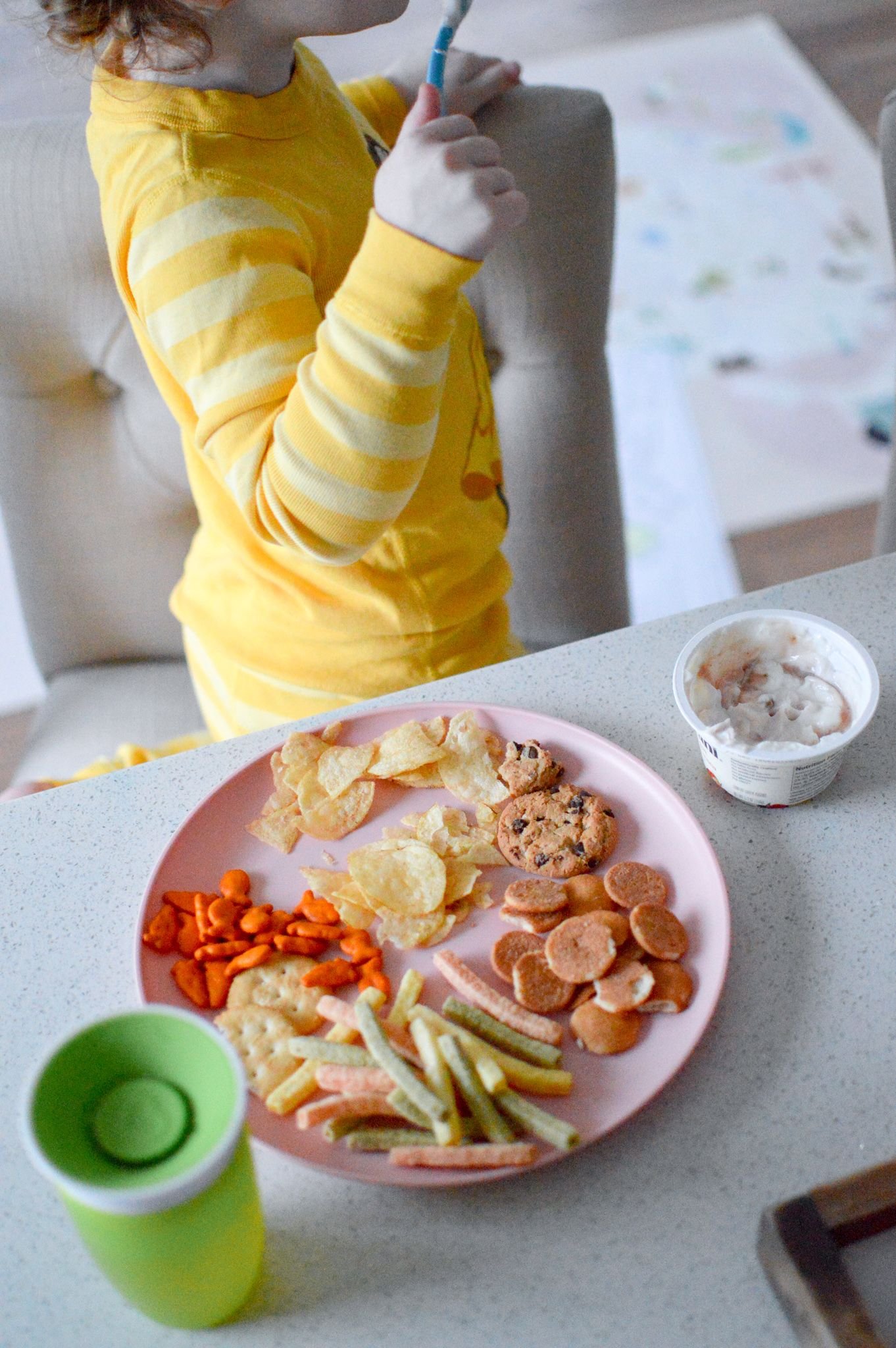Our Experience with ARFID
I always thought Jackie was a picky eater, but when she was 3.5 she was diagnosed Avoidant/Restrictive Food Intake Disorder or ARFID. I learned that her "picky eating" was actually much more than that. I wanted to talk about this eating disorder, how it affects our family and what we've done as far as treatment goes. So let's get into it.
Our Experience with ARFID | What is ARFID?
The National Institute of Health classifies Avoidant/Restrictive Food Intake Disorder (ARFID) as "An eating or feeding disturbance (e.g., apparent lack of interest in eating or food; avoidance based on the sensory characteristics of food; concern about aversive consequences of eating) as manifested by persistent failure to meet appropriate nutritional and/or energy needs".
What this breaks down to is someone with ARFID is more than just a picky eater. People with ARFID restrict the amount of food they intake. They restrict the kinds of food they intake. They only have a small number of safe foods and they're not willing to try new foods for lots of different reasons. It's actually categorized in the DSM-V along with anorexia as an eating disorder. However, the key difference is that it has nothing to do with body image. The age old adage of " Oh, they're just a picky eater, they'll eat when they're hungry!" doesn't apply to people who have ARFID. I can tell you that from experience. They simply don't eat, even when you know they're hungry. This disorder can affect anyone from any country and any walk of life.
Not all "picky eating" is just a kid being picky. Getting Jackie to eat every day was a battle that usually ended with both of us in tears. I wanted so bad for her to get something, ANYTHING, in her body and was happy when she ate anything at all. Jackie was exposed to lots of fresh/non-packaged foods before she stopped eating around age 2. She used to eat off my plate at dinner and at restaurants. Her ARFID was not caused by lack of food exposure.
Our Experience with ARFID | Diagnosis and How ARFID Affects Our Family
When Jackie was going through the autism evaluation process, I had a list of all the signs and concerns. A good chunk of that list was the limited things Jackie would eat (I listed them all out). During her initial autism evaluation in May 2020, feeding therapy and food aversions were discussed, but nothing in detail. When we moved to Tennessee and started at the practice we are at now, our developmental pediatrician talked about doing a feeding evaluation during the first appointment. She wanted us to rule out any possible GI issues and allergies first.
Jackie was referred to the feeding clinic that is connected with our developmental pediatrician’s practice. The team that evaluated her consisted of: a speech & language pathologist, child psychologist, a feeding specialist and a resident MD. Part of the evaluation was actually watching her eat. That was a BIG deal and I was really glad they did that because it really highlighted what a lot of the issues were. They diagnosed her with ARFID during that evaluation.
Before Jackie was diagnosed with ARFID, there were only about five things she would eat. She would eat ranch veggie straws, colby jack cheese sticks (ONLY sticks, not cubes, not slices, not rounded sticks). She would eat greek yogurt cups, but she was very specific about flavors, definitely nothing with chunks of fruit. We could almost always get her to eat french fries, particularly Wendy's fries. She would eat plain potato chips, luckily she wasn't picky about the brand, but flavored or wavy were a definite no, and plain M&Ms. She also would drink milk which was lifesaver. We mixed the fortified omega 3 Fairlife milk with the omega 3 chocolate Fairlife milk. It's packed with protein and she got a lot of her much needed fats, protein and nutrients from this milk.
Our Experience with ARFID | Treatment and Progress
As Jackie started feeding therapy her list grew to include: Mac and cheese, animal cookies, bananas, cheerios, tortilla chips, Glutino gluten free pretzels, and most cookies. Thankfully, that included special cookies my mom makes that are PACKED with protein and nutrients as well as some M&Ms to make her feel safe. Feeding therapy and eating at home are different. The therapist working with Jackie wanted to keep home a safe place for Jackie to eat, which I am so grateful for. When her therapist feels like Jackie is ready, we introduce new foods at home.
There are still foods she will eat at school and therapy but not at home (peaches very specifically for some reason). Her preschool was also connected to the practice her feeding therapy team was a part of. I was able to observe feeding therapy to get some ideas on how to introduce new foods at home and her therapist often went into her classroom at lunch and worked with her teachers on introducing new foods at school. Feeding therapy is more than just working with Jackie on eating new foods and expanding the variety she will eat. It's also been about getting her to eat more of the foods she already will eat. She is finishing meals now which is incredible. As of now, Jackie will now as well consistently eat: chicken nuggets, ketchup, apples, carrots, cheese quesadillas, meatballs, pizza, muffins, cheese toast, popcorn, applesauce, juice, granola bars, marshmallows, ham, lollipops, bread, strawberries, cheeseburgers, hot dogs, kettle corn, popsicles and vanilla ice cream. This is really a testament to how amazing her team was in exposing her to new things in a safe way.
1 in 37 kids under the age of 5 have a pediatric eating disorder. 1 in 44 kids are autistic. Let that sink in. If you feel like your child is exhibiting signs of pediatric feeding disorder or ARFID, talk to their doctor. There are ways you can get help! Avoidant Restrictive Food Intake Disorder (ARFID) occurs in children, teenagers AND adults - it is not exclusive to children. Like other eating disorders, it can occur any time in life and needs diagnosis and treatment to recover from. It will take work and we are always going to have to be aware of this but recovery is possible. If you know or suspect someone in your life to have ARFID, please get them help from a medical professional. We are forever grateful for our amazing doctors and therapy team that have helped Jackie progress in so many ways and hope you can find the same success.





